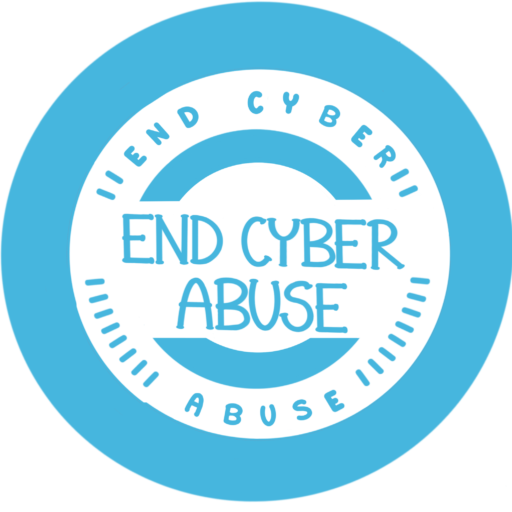While we are all staying at home and social distancing during this pandemic — we’re all spending a lot more time online. We might be sexting, making videos on TikTok, going on online dates, or sharing intimate images with our loved ones.
Unfortunately, some might also be experiencing harassment or online abuse. Gendered power dynamics from the “real world” are all too often reflected in the virtual.
But while the pandemic might be increasing our reliance on the digital world, digital abuse is just as unacceptable as physical abuse. Social distancing is no excuse for technology-facilitated violence.
You should be able to freely express yourself online without experiencing abuse, harassment, or victim-blaming. If you are being threatened or harmed online, remember that you have rights.
What are the types of online abuse that we might be increasingly seeing during this pandemic?
Image-Based Sexual Abuse
- The non-consensual sharing or threat of sharing of an intimate picture or video.
- This can include digitally-altered images (e.g. a person’s face digitally added to a pornographic or sexualised image).
- This can be done by anyone: partner, ex-partner, friend, or stranger.
Online Harassment
- Targeted abuse based on a person’s gender, race, or other identity.
- Can include: Hateful comments, use of derogatory slurs, unwanted sexually explicit messages, threats to harm or hurt someone, or inappropriate jokes.
- Repeated messages, despite the recipient asking the harasser to stop.
- This can occur in the workplace or in schools, where harassment creates a hostile environment that impedes one’s work or education.
Doxxing
- Revealing personal or identifying documents or details online (e.g. home address) about someone without her consent.
Hacking
- Stealing a person’s images, videos, or other personal information without their knowledge or consent.
Surveillance or Cyberstalking
- Installing spyware or stalkerware on a person’s phone without her knowledge.
- Keeping track of a person’s whereabouts or tracking her online communications.
Impersonation
- Opening online accounts or posting photos and text online pretending to be someone else. Stealing someone else’s identity.
Cyber-Flashing
- Receiving unsolicited intimate images via text, social media, or email.
What can you do?
If you experience abuse or harassment online:
- Make sure you know your digital rights and understand that your consent is crucial for any of this behavior to be okay.
- In many countries, it is illegal for someone to surveil you without your knowledge or share intimate images of you online without your consent.
- Always take pictures of your communications and keep notes of when each incident occurred.
- If you are living with an abusive partner, you have options: shelters are still open and running, and hotlines are open to offer help.
If you suspect that someone you know is engaging in this behavior:
- Remind them to always ask for others’ consent before sharing an image or video of them.
Social distancing doesn’t mean social isolation:
- Building a strong virtual network around you is key. Have friends and family you check in and communicate with.
- If you worry that a loved one is living with an abusive partner or suffering from digital abuse, make sure they know that this behavior is unacceptable and that you are there for them.
- Help them create a safety plan for what to do in a moment of crisis.
- Create a code word to use in an emergency.
- Check in with them frequently, finding safe times and safe channels to communicate.
During times of crisis like this pandemic, safety is fundamental to survival: both online and off.
Important Numbers to know:
If you are experiencing forms of digital abuse, harassment, or domestic violence, here are some key resources. (Please note that due to COVID-19, some of these resources may not be active).
- Australia
- Office of the Safety Commissioner: Visit their website (https://www.esafety.gov.au/image-based-abuse/action)
- Brazil
- Safernet: Visit their website (www.helpline.org.br)
- India
- FemJustice Legal Center Hotline: Call +91 9019548792, 12pm to 4pm, Thursdays and Fridays
- National Cyber Crime Helpline: Call 155260, 9 am to 6 pm, or visit their website (https://cybercrime.gov.in/Webform/Helpline.aspx)
- Ministry of Women and Child Development: Email complaint-mwcd@gov.in
- Cyber Crime Investigation Cells: Visit this website for a list of relevant authorities’ and their phone numbers (https://blog.ipleaders.in/cyberbullying/)
- iCall: For online mental health support, visit this website (http://icallhelpline.org/)
- Pakistan
- Digital Rights Foundation’s Cyber Harassment Helpline: Call 0800-39393, every day from 9 am – 5 pm, or email at helpdesk@digitalrightsfoundation.pk
- Taiwan
- TWRF’s Anti-Revenge Porn Website: Call +886-2-2555-8595 or visit their website (https://advocacy3.wixsite.com/twrf-antirevengeporn)
- United Kingdom
- Revenge Porn Hotline: Email help@revengepornhelpline.org.uk as their helpline is temporarily closed due to Coronavirus concerns
Victim Support: Call 08 08 16 89 111 or visit their website (https://www.victimsupport.org.uk/) - Women’s Aid: Call 08 08 20 00 247 or visit their website (https://www.womensaid.org.uk/)
- Revenge Porn Hotline: Email help@revengepornhelpline.org.uk as their helpline is temporarily closed due to Coronavirus concerns
- USA:
- Domestic Abuse Hotline: Call 1-800-799-SAFE (7233)
- Cyber Civil Rights Initiative Crisis Helpline: Call +1-844-878-2274
- National Resource Center on Domestic Violence: Call 1-800-537-2238 or visit their website (www.nrcdv.org)
- Futures Without Violence: The National Health Resource Center on Domestic Violence: 1-888-792-2873 or visit their website (www.futureswithoutviolence.org)
- National Center on Domestic Violence, Trauma & Mental Health: Call 1-312-726-7020 ext. 2011 or visit their website (www.nationalcenterdvtraumamh.org)
For more information, please read our country legal fact sheets on our website, here.
If you are in India, and you are a survivor of image-based sexual abuse or work with survivors, we want to learn about your experience. Please take our survey here.


